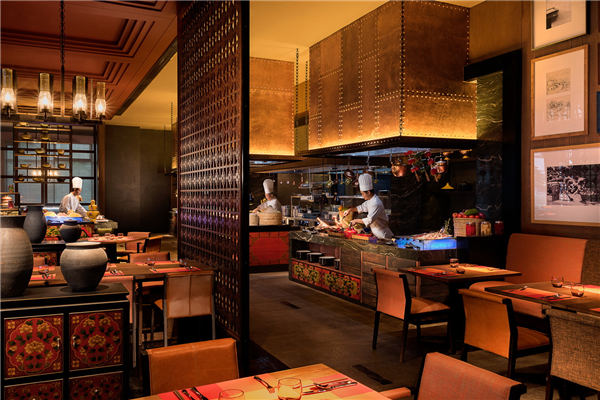Pigs of paradise at Shangri-La restaurant
 |
|
Chefs at work in the kitchen at Hylandia by Shangri-La. |
"Always judge a pig by its fat," Wu says he tells his cooks and chefs. "A qualified chef (for cooking Tibetan dishes) must be able to tell the difference between a Tibetan pig and a common one, which lies in the fat they carry."
A more apt comparison for the roast Tibetan pig would be to cochinillo asado, or Spanish roast suckling pig. Although the Tibetan one doesn't look like cochinillo upon serving - the meat is much darker in color and wrapped in lettuce leaves-the texture of the pork is similarly moist and chewy. The only difference is that there is a more exotic and aromatic flavor thanks to spices, herbs and the smoke from pine, peach and plum charcoal.
The classic accompaniments are roasted potatoes and ears of corn, and the hotel's suggested wine, cabernet sauvignon also from Shangri-La, makes an excellent pairing. But the best "sauce" spicing up the experience is the atmosphere. The pig is roasted a la minute in open air, 5 kilometers away from the hotel, under a wood stand that locals use for drying green barley, deep in a valley surrounded by snow-capped mountains and deep gorges. It's apart of a day trip, if not the highlight, that the hotel offers to organize for guests who want to experience local villages and the culture.
"This is my slice of Shangri-La," says Wu, who is also working on interpretations of yakmilk yoghurt and matsutake sashimi, which are already served at the hotel, but are not yet "perfect".
"Come to Shangri-La, if you are out of work. Come to Shangri-La, if you are out of love," Wu mumbles.
"Were you out of work or love?" I ask.
"I am now in love with Tibetan pigs and employed at the world's most beautiful place," he says.
Contact the writer at xujunqian@chinadaily.com.cn
















